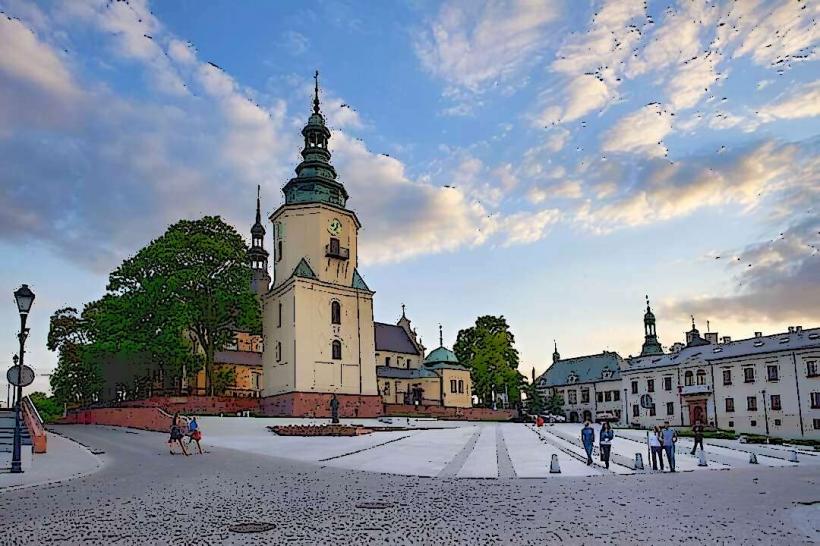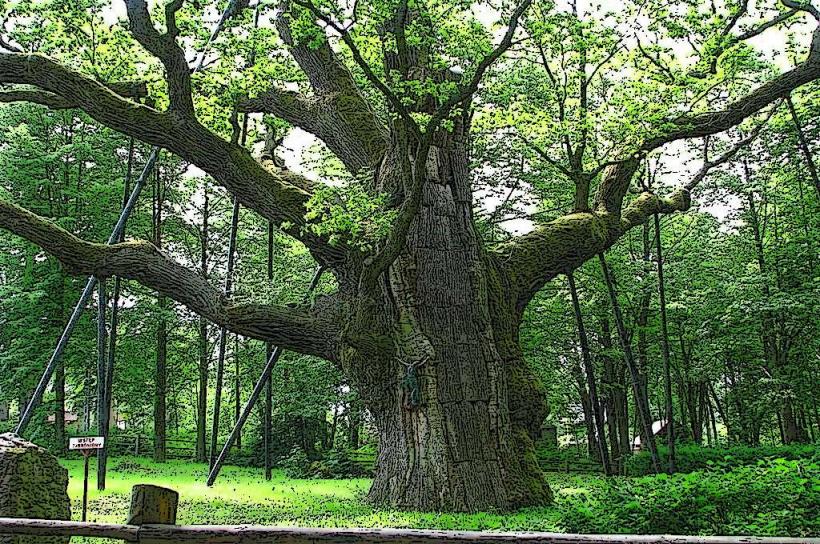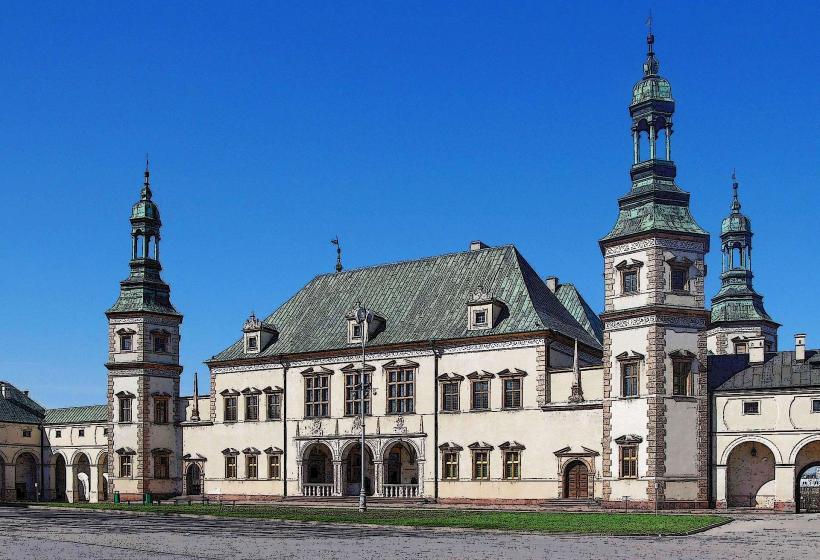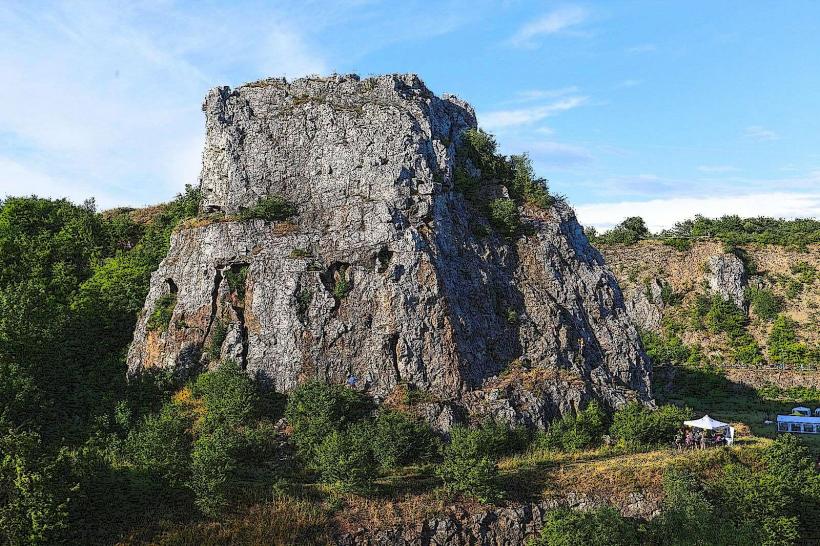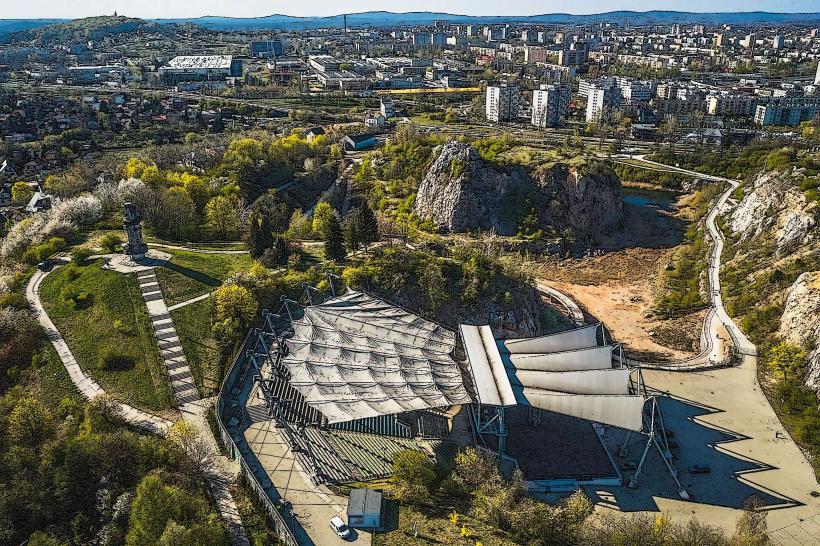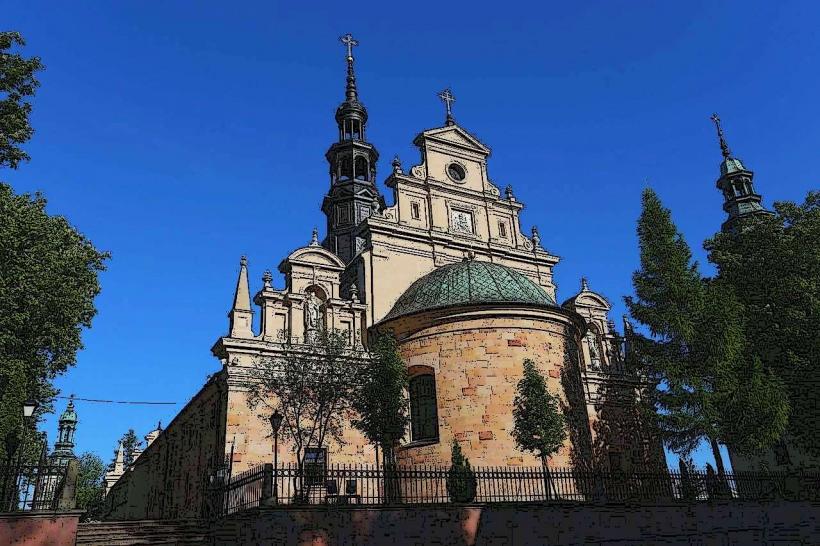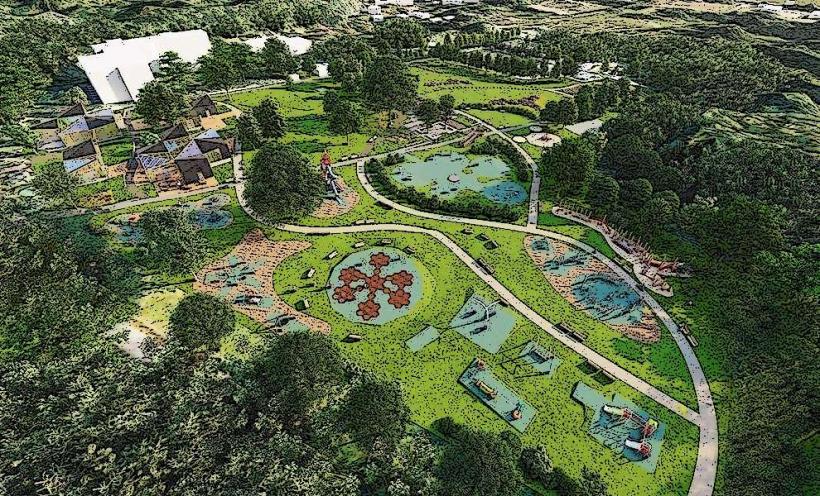Information
Landmark: Geopark KielceCity: Kielce
Country: Poland
Continent: Europe
Geopark Kielce (also known as the Kielce Geopark) is a unique geological park located in the area surrounding the city of Kielce, Poland. It is a region of remarkable natural beauty and geological significance, attracting both nature lovers and those interested in geology and environmental science.
Key Features of Geopark Kielce:
1. Geological Importance
- The Kielce Geopark is part of the Świętokrzyskie Mountains, one of the oldest mountain ranges in Europe, with rocks that are over 500 million years old. The region offers an exceptional opportunity to study various geological formations, including limestone, sandstone, schist, and marble.
- The geopark is known for its fossil-rich layers, with some sites containing well-preserved marine fossils from the Paleozoic era. These fossils provide key insights into the region’s past when it was covered by seas and oceans.
- The Kielce Geopark is recognized as an area of great geological value, with many of its sites listed as geosites. Some of these are used for educational purposes, making the geopark an important center for geology enthusiasts, scientists, and students.
2. Geosites and Trails
- The park contains several geosites, which are areas of particular interest due to their geological features. These sites are open to visitors and often feature interpretive signage to help explain the significance of the rock formations, fossils, and other geological phenomena.
- Geological trails wind through the geopark, guiding visitors through the most interesting and visually striking locations. These trails are designed to showcase the region's unique geological history, with stops at key locations for geological observation and study.
- Popular sites within the geopark include Jaskinia Raj (Raj Cave), one of Poland's most famous limestone caves, and the Kielce Fossil Site, where visitors can see evidence of ancient sea life.
3. Nature and Biodiversity
- The Kielce Geopark is not only a geologically significant area but also a region of rich biodiversity. The varied habitats within the park support a wide range of plant and animal species, making it an ideal destination for nature enthusiasts and birdwatchers.
- The park is home to several protected species and rare plants, and it offers a variety of ecosystems, including forests, meadows, and wetlands. The forests of the region are particularly notable for their oak, pine, and beech trees.
- The Białe Ługi Wetland is another key feature of the park, offering a habitat for many species of birds and providing a serene setting for visitors.
4. Educational and Visitor Facilities
- Geopark Kielce offers a range of educational programs aimed at increasing awareness of geology and conservation. The park is a popular destination for school groups, with guided tours and workshops that teach about the region’s geological history, environmental preservation, and the importance of protecting natural landscapes.
- The Geopark’s visitor center provides exhibits about the region’s geology, fossils, and natural heritage. The center also offers interactive displays and materials that explain the processes that shaped the Świętokrzyskie Mountains and the surrounding landscapes.
- Guided tours are available for visitors who wish to explore the geopark’s geosites and learn more about the area’s geological history from knowledgeable experts.
5. Cultural and Historical Connections
- In addition to its natural beauty and geological significance, the Kielce Geopark is also home to several historical and cultural landmarks. The city of Kielce, which lies on the borders of the park, has a rich history, and its proximity to the geopark makes it a central hub for visitors exploring the region.
- The Kielce region has long been an important center of mining and metallurgy, and the park contains remnants of historical mining operations, adding an element of cultural heritage to the landscape.
- The park also provides access to sites such as the Kielce Cathedral, the Bishops’ Palace, and other landmarks that offer insights into the history of the region.
6. Tourism and Activities
- Geopark Kielce is a popular destination for outdoor activities such as hiking, cycling, and nature walks. The park's network of trails makes it accessible to people of all ages and abilities, providing opportunities for exploration in both summer and winter.
- The geopark is also a great place for photography, especially for those interested in capturing geological formations, fossils, and scenic views of the surrounding landscape.
Conclusion:
Geopark Kielce offers a fascinating combination of geological, natural, and cultural attractions, making it a must-visit for anyone interested in earth sciences, history, or simply enjoying the beauty of nature. With its diverse landscapes, rich fossil heritage, and well-preserved geosites, it provides an excellent opportunity to explore one of the oldest mountain ranges in Europe and learn about the natural processes that have shaped the region over millions of years. Whether you are a geologist, nature lover, or cultural enthusiast, Geopark Kielce offers something for everyone.

